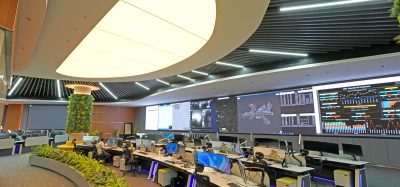The changing nature of the airport investor
Posted: 2 October 2012 | David Bentley, Airport Finance Analyst and Writer | No comments yet
Thirty-three years after the first privatisation of an airport in Europe, this article examines how the nature of the investors is changing.
It seems that the Initial Public Offer (IPO) – which was the chosen method for BAA’s privatisation – kick-started a wave of other full and partial IPOs on airports throughout Europe, including Vienna (1992), Copenhagen (1994), and Rome (1997), moving over to Auckland (1998) then Malaysia (1999), Zurich and (surprisingly at the time) Beijing (2000) and Frankfurt (2001). All these public issues were on substantial primary level airports, many of whose operators were becoming involved in ‘group’ activities, having themselves invested in other airports – often in different continents – through any one or more of a growing variety of means such as leases, concessions, trade sales, the many Build Operate Transfer (BOT) derivatives and Public Private Partnerships (PPP).
In many ways it was a golden era. It could be argued that the privatisation of the unwieldy BAA was botched, that it might have been better to split it up then as it is being broken up right now, and of course it was de-listed anyway in 2006 when it was bought by a Ferrovial-led consortium. By and large though, the IPO has been a successful privatisation method. None of the other airports mentioned have substantially changed their ownership structure, even if the actual distribution of equity has varied significantly and investor returns are considerably better than they might expect from the airlines.
Thirty-three years after the first privatisation of an airport in Europe, this article examines how the nature of the investors is changing.
It seems that the Initial Public Offer (IPO) – which was the chosen method for BAA’s privatisation – kick-started a wave of other full and partial IPOs on airports throughout Europe, including Vienna (1992), Copenhagen (1994), and Rome (1997), moving over to Auckland (1998) then Malaysia (1999), Zurich and (surprisingly at the time) Beijing (2000) and Frankfurt (2001). All these public issues were on substantial primary level airports, many of whose operators were becoming involved in ‘group’ activities, having themselves invested in other airports – often in different continents – through any one or more of a growing variety of means such as leases, concessions, trade sales, the many Build Operate Transfer (BOT) derivatives and Public Private Partnerships (PPP).
In many ways it was a golden era. It could be argued that the privatisation of the unwieldy BAA was botched, that it might have been better to split it up then as it is being broken up right now, and of course it was de-listed anyway in 2006 when it was bought by a Ferrovial-led consortium. By and large though, the IPO has been a successful privatisation method. None of the other airports mentioned have substantially changed their ownership structure, even if the actual distribution of equity has varied significantly and investor returns are considerably better than they might expect from the airlines. More airports followed the IPO route later such as Airports of Thailand, three groups in Mexico that were originally privatised by concession arrangements, and Aéroports de Paris. Even now, and despite a crushing lack of positive investor sentiment globally, the IPO is still considered a viable method of privatisation, and airports as diverse as those in Milan, Moscow, India, Argentina, Korea (Seoul) and Indonesia have at least considered it.
Running concurrently with the IPO regime in the late 1990s and early 2000s, and notably so in Europe, was a wholly different method of privatising (usually smaller) secondary airports through trade sales or concessions, and typically led by property development companies or surface transport operators such as First Group, Stagecoach and National Express (surface transport sector) and Thomas Bailey Investments (TBI) from the property sector. Some of these firms perhaps got a little out of their depth, National Express for example taking a 99-year lease on New York Newburgh Stewart Airport but holding it for just seven before relinquishing it back to the public sector in the form of the Port Authority of New York and New Jersey. To this day National Express’ short stay in New York State remains the only privatisation of a public commercial U.S. airport by a private foreign firm, though another one is currently in the pipeline in Puerto Rico. Meanwhile, TBI exited its interests in just about every sector apart from aviation and invested heavily in airports in the UK, Europe and the Americas before acquiring the assets of the U.S. Airports Group International in 1999; thus transforming a small Cardiff estate agent into a global player in the airports business. In 2004 a struggling TBI was itself acquired by ACDL, a consortium of Spanish airport operator AENA and road toll concessionaire Abertis.
None of the companies mentioned above other than AENA and Abertis remain in the sector today and there have been other casualties along the way. Nevertheless there remains some nostalgia for firms who at least took a hands-on approach to management and were influenced as much by operational excellence issues as by the bottom line.
Lying somewhere between this polarisation of IPO activity and transport operators from outside the business came a raft of industrial and commercial conglomerates throughout the 2000s including BAE Systems (UK), Peel Group (UK), Hochtief (Germany), the GMR and GVK Infrastructure groups in India, Vinci (France) and, latterly, the Philippines’ San Miguel Corporation. Typically they would join consortia in order to bid for airports though sometimes they would bid alone.
Financial firms have always been an important part of the privatisation mix of course, supporting those companies whose specialisation was, say, general management, construction or retail development, but it is only in the last five years or so that such organisations have become the principal movers and shakers in the business. Their involvement can be traced back to a sudden surge of interest in the sector from Canadian pension funds, which dates back a decade or so. Pension funds traditionally like high-longevity infrastructure assets such as airports and as airport revenues began to diversify they have been keen to take a financial stake – though usually only in primary-level airports – while typically leaving operational matters to other and better qualified stakeholders. According to the Global Airport Investors Database there are currently at least 12 pension funds active in the airports business right now. If pension funds were the trailblazers, infrastructure and sovereign wealth funds too have been making their presence felt latterly.
The fund that is claimed to be the world’s first ‘investment partnership fund’ in the airport sector was set up in 2005 by Hochtief AirPort Capital (HTAC), headed by Germany’s Hochtief AirPort in conjunction with Hastings Funds Management Ltd of Australia, Canada’s Caisse de dépôt et placement du Québec (a pension fund) and KfW IPEX-Bank (Germany), truly a global response to a global industry demand. Other such funds are or have been operated by H R L Morrison (Infratil) of New Zealand, Goldman Sachs (two funds, in 2006 and 2010), and one that is currently in the news, Global Infrastructure Partners (GIP), a collaboration of Credit Suisse and General Electric, and the operator of London Gatwick and City airports, soon to be joined by Edinburgh Airport. GIP instigated its second fund, to expand its airport portfolio, in 2011. According to the Global Airport Investors Database there are at least 26 such infrastructure funds or fund managers currently active in the airports business right now.
Account also needs to be taken of the increasing presence of sovereign wealth funds (SWFs) in the airports business. As with the infrastructure funds there were few of them only five years ago but there are now at least six that are active in the sector, the most recent being the Qatar Investment Authority, which announced in February 2012 that it was partnering with the U.S. private equity firm Carlyle Group to bid for a near 40 per cent stake in Turkey’s TAV Havalimanlari Holding. Another is the Abu Dhabi Investment Authority (ADIA), which took a 15.9 per cent stake in London Gatwick Airport shortly after it was acquired by GIP in 2010 and which has recently been linked with Manchester Airport Group and a convoluted bid by that organisation to bid for London Stansted Airport. Indeed, ADIA has the largest asset base of any of these funds, over $625 billion, which could build a lot of airports. Globally, they collectively have $4.8 trillion in assets (2012). They can no longer be overlooked as a potential source of funding for airport projects, though by their nature their interest will lie very much in big, primary level and established airports.
Although there is no universally agreed definition of an SWF, it is broadly defined as ‘a government investment vehicle which is funded by foreign exchange assets, and which manages these assets separately from official reserves. They are often cloaked in mystery, operate to no discernible rules, and are reputed occasionally to pursue objectives of a strategic or political nature, such as to secure control of strategically important industries for political gain or to extract and acquire technology from a foreign industry.
We have come a long way since the days of bus companies running airports and the variety of investors discussed so far only scratches the surface. Others include private equity funds, venture capitalists, investment banks, investment trusts, insurance companies, financial services providers, construction companies, oil and gas industry refiners, wholesalers and suppliers, ATM service providers, highway concession operators, ground handlers, real estate firms, industrial conglomerates, hotel groups, mining companies, charitable trusts, airlines (21 to the best of my knowledge) and even a specialist chocolate retailer, which tried to buy into Belgium’s Charleroi Airport. That is not to mention the State of course. For all the privatisation of airports that has taken place over the last two decades, the State is by far still the largest owner/operator of airports worldwide.
So where do we go from here? Different privatisation methods are preferred in different parts of the world. Governments on some continents choose to hang on to their airport assets, sometimes extracting very competitive leasing terms. Public Private Partnerships are popular in India while outright sales are more in vogue in Europe. The U.S., peculiarly, simply cannot get its privatisation programme under way at all – it has been trying since 1996 when the programme was drafted during the Clinton era – and if the Puerto Rico and Chicago Midway leases never see the light of day that may well bring down the curtain on this activity once and for all. In the meantime new privatisation methods are constantly coming on to the radar, including community partnerships, diaspora revenues (particularly appropriate to Africa) and securitisa – tion of future incomes sold to venture capitalists.
All this assumes that the very concept of the privatisation of the funding and operation of airports remains fashionable. One senses a growing trend of opposition, not merely from the traditional quarters (e.g. the trades unions) but from the general public, which perceives, rightly or wrongly, that the worst delays and overall ‘travel experience’ is found at privatised airports.
Some public sector airport owners have staunchly refused to go down the privatisation path. One of the best examples is the UK’s Manchester Airport, Britain’s third largest by passenger numbers, part of a group that is the second largest after BAA and just about the only one in the UK to remain in the public sector. It eschewed privatisation like the plague for decades until only recently, when it offered to sell half of its equity in order to raise enough capital to bid for Stansted Airport if and when that airport is finally forced out of the grasp of BAA. Such polarising swings of philos – ophy are increasingly becoming characteristic of the industry.
Is this the right time to be investing in airports anyway? If you are an owner wishing to sell you still cannot expect to obtain a fair price for your asset, despite the higher than expected price achieved by BAA for Edinburgh Airport, and nothing like the amount you might have received for the equivalent asset back in 2007. BAA obviously believes it, having bent over backwards to delay the enforced sale of London Stansted Airport, its biggest asset after Heathrow, until a more favourable environment exists; assuming it ever does. Prices, as measured by the Ebitda (earnings) multiple have fallen to 10-13 times earnings on average (it would take you 10-13 years to get your investment back), from a high of over 30 times only five years ago so it is certainly a buyers’ market, as evidenced by the over 400 functioning investors I am aware of. Incidentally that first privatisation was at Waterford, in Ireland.
About the author
David Bentley has been analysing airport financial transactions since 1999 and has written seven manage – ment reports on the subject in addition to others on low cost airports, airport security and airline financing. The most recent report, The Global Airport Investors Database, remains a work in progress. A graduate of Cranfield Institute of Technology (MSc Air Transport Management), David previously worked in marketing in the airline business, as a partner in a retail travel company and as a corporate travel manager. He is a regular contributor to global media on air transport matters.
New report from International Airport Review: Securing Airports in an Evolving Threat Landscape
International Airport Review has brought together top voices from across the global aviation security sector, including International Civil Aviation Organization (ICAO), ACI World, Fraport, Qatar Civil Aviation Authority, Winnipeg Airports Authority, and Smiths Detection to examine today’s most pressing airport security challenges and emerging threats.
This expert-led report provides a strategic assessment of the vulnerabilities facing airports in 2025, encompassing cyber-attacks, drone incursions, evolving geopolitical risks, and emerging technologies.
The result is a practical, insightful guide to strengthening airport resilience, anticipating risks before they escalate, and keeping your airport off the front page
Download the report for free and stay ahead of the security curve – READ FOR FREE NOW!

















